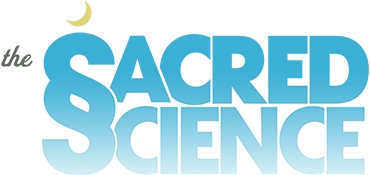We all experience physical pain at times in our lives. Have you ever wondered why?
It’s an ancient and puzzling question. Why does pain have to be part of the human journey?
From a spiritual point of view, the answer may be shrouded in mystery. But we do know a few things, from a purely physical perspective, about what pain is actually doing in the body.
Pain is your body’s danger signal. It’s what you feel when your nerves send an electrical current to your brain that says, “Something is not right here!” Some damage has occurred, or is threatened, in the body.
So, I want to share with you 3 things below that you can do to address your pain and soothe it.
But first, a few important words about pain…
Pain may be a temporary disruption of the body’s equilibrium, like when you stub your toe, or it could stem from a serious illness, like cancer or fibromyalgia. No matter the pain, the message is essentially the same: “Something’s wrong and needs to change.”
But what if that message is keeping you up at night and you don’t know what to do about it? What if you’re in chronic pain that limits your mobility and constricts your ability to take joy in life?
For millions of people, possibly including you, these are not abstract questions. And it’s actually dangerous to live with too much pain. Researchers at Harvard are currently studying the connection between physical pain and mental illness.
Sometimes, when you’re keyed up due to stress or trauma, your body ignores the pain so that it can focus on keeping you alive. This is an incredible evolutionary gift that our ancestors passed down to us. But you cannot live like that in the long-term; your pain-ignoring mechanism wears off.
Sooner or later, pain must be felt and faced.
So … given that there are so many different types of pain in this world, so many ways that the body can hurt, are there any universal methods for dealing with pain?
Yes.
Very simply, the way to begin to soften around our pain is to investigate it.
Let it all the way into your awareness. Really feel it. Listen to it. And then describe it.
If you are in any type of pain right now, take a deep breath. Close your eyes, and allow yourself to really feel your body.
What hurts? What does it feel like? How long has it been bothering you?
How often do you feel this pain? All the time, or at different times? When do you most often feel it?
What exactly does it feel like? A stab, an ache, a burn? Is it sharp or dull?
Where in your body do you feel it? Where in your body do you feel it most?
What might this pain be trying to tell you?
Speaking from my own experience, I know that having chronic migraines put a damper on the life I dreamt of living.
So, with the help of a few friends, I learned some techniques and lifestyle changes that have liberated me from a great deal of pain. These techniques have allowed me to experience life again in a way I’d thought was out of my reach.
Here are a few of the things I do to listen to my body every day.
#1 Get Rid of Stress
I know this one is a little ambiguous, but really, anything you can do to de-stress is going to allow you to be more present in your body. And that’s the name of the game.
Here are some easy, common de-stressing methods:
- Draw a bath and light some candles to create a soothing sensory experience.
- Turn on nature sounds as you go to bed every night.
- Go for a run or a walk.
- Do some yoga.
- Unfollow social media accounts that agitate you.
Whatever it takes, do it!
But don’t stop there. Remember to feel the sensations in your body that arise when you’re not consumed by stress.
How can you do that? Try #2 below…
#2 Body Scan Meditation
Body scan meditations are arguably the easiest way to reconnect to your body, intentionally relax each muscle, and see what aches and pains require your attention.
A body scan gives you a chance to “turn off” your mind and just be present in the moment. It only takes about 30 minutes. You may drift off mid-meditation, and that’s perfectly okay!
Here’s how to do it!
- Start off by closing your eyes and taking deep, intentional breaths.
- Pay attention to the rising and falling of your chest for 3 breath cycles.
- Wiggle your toes and flex/point your feet. Then lay still for 3 breath cycles.
- Bend and extend your knees twice. Then lay still for 3 breath cycles.
- Breathe into your belly for 3 breath cycles.
- Wiggle your fingers and bend/extend your arms. Then lay still for 3 breath cycles.
- Turn your head left and right. Then come back to center for 3 breath cycles.
- Lay perfectly still and take note of places that ache in your body. Send positive energy to those spots.
- When unpleasant thoughts or distractions come to mind, don’t try to push them away or resist them. Allow them, receive them with love and tolerance, and let them naturally fade. All the while, carry on scanning your body.
Time and again, meditation has been clinically proven to reduce:
- overall stress levels in the body
- anxiety-related illness
- chronic pain and fatigue
#3 Use Your Imagination
This is one that I do regularly.
I find a comfortable seat, drink some relaxing tea, and go into my mind.
I try to imagine my pain as tangled-up Christmas lights — if there’s one light missing, the whole string won’t light up. I try to find the one light that needs replacing (aka, my source of pain), acknowledge it, and try to soothe it in order to get my whole string (aka, my body) lit up again. I focus on unraveling the messy string of lights and finding balance with my pain, allowing it its place so that it too, in a sense, can contribute to the light that is my life force.
If your head is hurting, imagine the cluster headache and pull it apart with your mind’s eye. Then move down to your neck and untangle the tension there. Then move to your shoulders and lay out the strands of your pain flat, following the patterns of your muscles. Then go down your spine, until you find the bulb that needs replacing there, or lay the whole strand of your spinal column flat.
Especially when your pain feels all-encompassing, never forget that your mind and energy are incredibly powerful. Our entire experience of life is determined primarily by how we imagine our lives, and our world.
So work and play with your imagination. Even as you stop “resisting” your pain, keep strengthening your imagination.
Stay curious,
Nick Polizzi
Host of Remedy: Ancient Medicine for Modern Illness
& Founder of The Sacred Science



4 Responses
This is very good, every time I read something here it educate me so much, and I would like to thanks for all this useful information.
I love this! I have used many very effective relaxation techniques over the years, but have never come across (or thought about) “de-tangling”. I just tried “de-tangling” with immediate results! This may become a favorite! Thank you for sharing this and for all the valuable information you have shared in a heart-felt way throughout the years.
As a spiritual healing tutor of twenty five years experience, may I offer that it also helps to remember that we are amazing energy Beings first and foremost, having an experience of the ‘physical’ world through our sensing vehicle – the physical body. Once this focus has been established, perhaps after reading/studying about our real energetic selves and the importance of our human energy field, there is far less reaction to what we perceive as ‘negative’ experiences as we navigate through life.
We create physical ‘health conditions’ initially from imbalances in our emotional or mental frequencies in our human energy field. We are amazing creators!
Where our pain is located is instructive – shoulder pain can be about too much carrying of responsibility, or how we feel about it. Back pain can be the manifestation of our feeling unsupported in life. Leg manifestations can be about being or feeling unable to move forward in life.
Louise Hay’s book ‘Heal Your Body’ goes into this in detail.
Let’s make 2020 the year that humanity remembers Who It Is. Let’s make it the year that we emotionally and mentally rise above the lowering mind- programming that is aimed at us. Let’s make it the year that we take harmless, natural health support, and use techniques such as Nick teaches.
We can remember Who We Are!
Peace and Progress to All
I’m always very tence in my neck and shoulders like.big.painful knots that hurt so bad and I’m so nervous and anxious all the time help what can I do kate